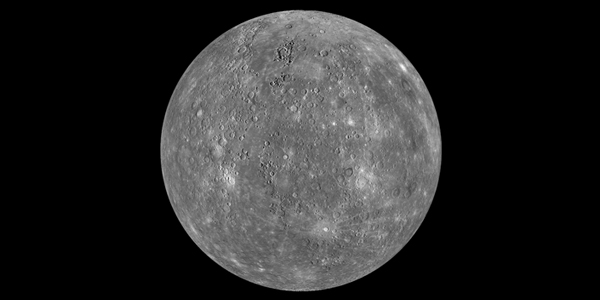Knowledge Articles | Mercury

Mercury
- Mercury is not just the closest among the planets to the sun, but also the smallest. Its diameter is around 4879 kms at the equator. If compared to the mass of earth... 20 Mercuries are needed to fill up the earth. So it's no surprise that Mercury is the smallest planet in our solar system. - As Mercury is very closest to the Sun, it would take just 88 days for the planet to revolve round the sun. But it would take 188 days to revolve itself. Which means that, two years on mercury is equal to one mercury day. Mercury might sometimes be visible passing across the sun. Such a visual feast is called a 'Transit'. This Transit is visible for every 7 years in average, and the next Transit is going to take place in 2016. - The temperatures on mercury are highly fluctuating. Depending on the place and time, they can reach anywhere between -180 to 430 degrees Celsius. Though mercury is closer to the sun it's not the hottest planet in the solar system. As there is very thin atmosphere on the surface of mercury, the heat that comes from the sun is directly reflected into the space. By the way_ Venus is the hottest planet on the sun. - Almost all planets in the solar system have natural satellites for them. But Mercury and Venus don't have any satellites. The gravity of mercury is too weak to hold any satellite. If you are 100 kgs on the earth, you would weigh only 37.8 kgs on Mercury. -Though Mercury is small in size, it's really dense in weight. It is the densest planet in the solar system after Earth. Rocks and minerals are the reasons for its density. Mercury consists of huge amounts of Iron! The planet has a huge core filled with molten iron. The core of Mercury is so big that it occupies 40 percent of its mass compared to just 17 in case of earth! -Mercury is unique in many ways. It's only planet that revolves without any tilt. The tilt of mercury is almost 0 degrees facing it straight to the sun. This is the reason why there won't be any seasonal changes on Mercury. - Mercury also has a unique feature of having highest 'Eccentricity' when compared to the rest of the planets. 'Eccentricity' is the term used to deviation of an orbit from being perfectly circular. In other words the closest of any planet towards the sun is 'Perihelion' and the farthest point is called an 'Aphelion'. The difference between these two distances might be termed as 'Eccentricity'. Mercury is 6.98 crores of kilometers from sun when it is farther from it. But it comes to just 4.60 crores of kilometers, when it is closer to sun. THAT IS SOME ECCENTRICITY!